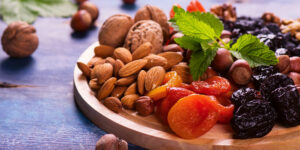Your Greenhouse And Fruit In Early June

Cold symptoms usually appear two to three days after the virus enters the body. The most common symptoms include: sore throat, stuffy or runny nose, cough, sneezing, and pain in the hands and lower back. Fatigue, watery eyes, and trouble sleeping may also occur. If the symptoms persist for more than a week and are accompanied by severe headache, weakness, loss of appetite and nausea, it is more likely that the disease is caused by the influenza virus. Fever is also common. It should be noted that in cases of viral infections of the upper respiratory tract, the cause of the disease cannot be removed and only the treatment of symptoms is possible.
During a cold, plenty of rest, plenty of liquids, and gargling with lukewarm salt water help to improve symptoms. Taking painkillers helps relieve headache and reduce fever. Antibiotics are useful only in cases where a bacterial infection occurs after a viral infection. Children, elderly, pregnant women and people with problems such as diabetes and kidney diseases need more medical advice. Sometimes, the use of vaccine is recommended for the elderly (at risk) group in order to prevent infection.
What foods are good for colds?
In order for the body’s immune system to function optimally in its task of fighting cold and flu viruses, it must receive vital nutrients.
Among the main natural sources of vitamin C that are effective in treating colds are:
Oranges, grapefruits, berries, bell peppers, strawberries, potatoes and green leafy vegetables such as cabbage. High and regular intake of vitamin C helps to reduce the incidence, severity and duration of colds.
Cereals and legumes are good food sources of one of the group B vitamins called pantothenic acid. Lack of pantothenic acid causes frequent infections of the upper respiratory tract.
– Garlic contains iron, zinc and allicin, which strengthens the immune system and helps reduce the risk of viral infections.
Fish, salmon, sardines and oily fish are rich in omega-3 fatty acids. Flax seeds, pumpkin seeds and chestnut oil are also good sources of omega-3.
Sesame seeds, pumpkin seeds and sunflower seeds are rich sources of omega-6 fatty acids. These fatty acids help the cells of the respiratory system to fight against cold infections.
– Liver, types of fish including salmon, herring and herring, butter and eggs are sources of vitamin A. Carrots, mangoes, potatoes, apricots, pumpkins, and dark green vegetables also provide beta-carotene, which is converted into vitamin A in the body. Frequent respiratory infections in children are associated with reduced vitamin A stores. A varied and mixed diet containing these foods provides enough nutrients for a growing child.
– Fish, chicken, lean red meat, dairy products and a mixture of legumes, nuts, seeds and whole grains provide protein. Lack of protein intake increases the risk of infection.
– Meat, milk, grains and legumes provide vitamins B-6 and pantothenic acid, which are very important for ensuring the health of the immune system.
– Breakfast cereals, bread and yeast extract provide folic acid, which is essential for health and strengthening the immune system. In addition, beets, cowpeas and varieties of cabbage are good sources of folate (the natural form of folic acid).
All types of shellfish, lean red meats and whole grains contain zinc. Zinc is a mineral required for the immune system.
What foods should we avoid?
Packaged and canned foods are poor in vitamins and minerals. Therefore, instead of consuming these types of foods, use a variety of fresh fruits and vegetables, meat, fish, grains, nuts and seeds.